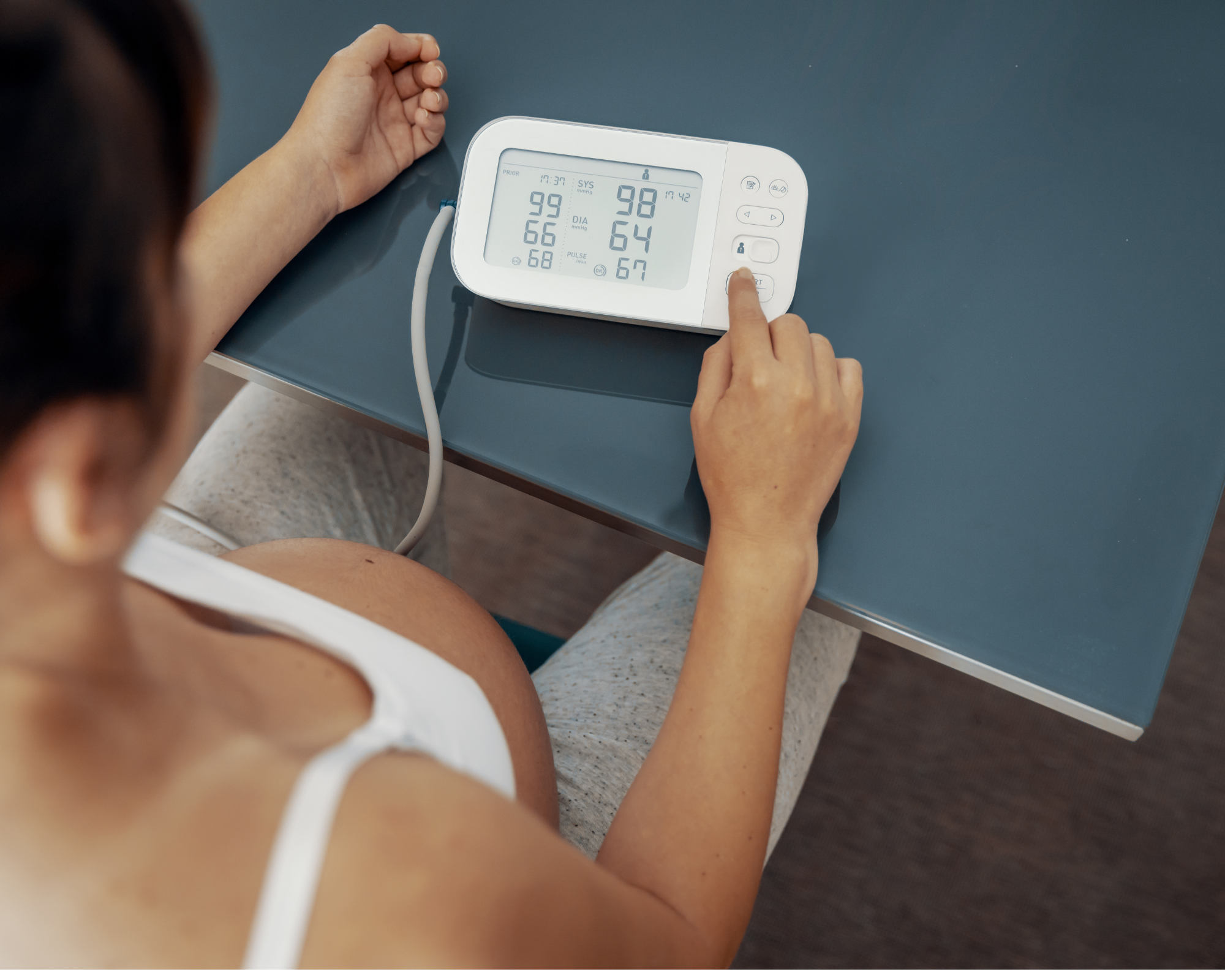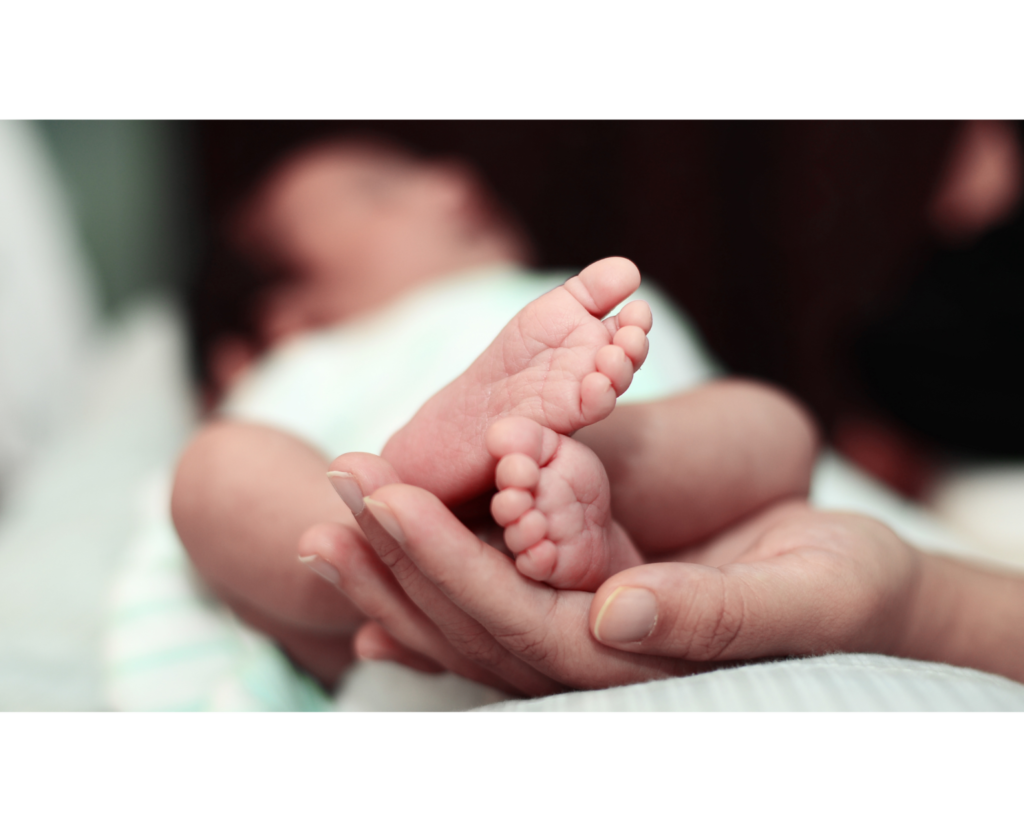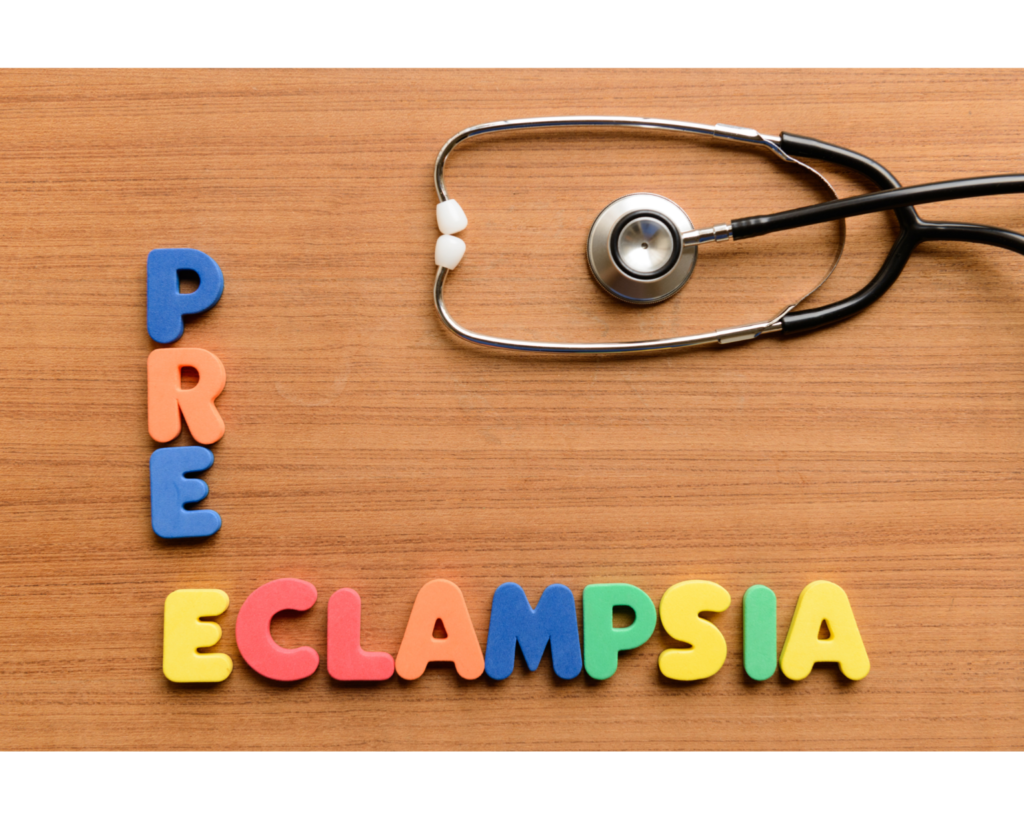
Preeclampsia during pregnancy: signs and follow-up
Preeclampsia is a serious complication that can occur during pregnancy. According to the VIDAL, it is caused by malformation of the placenta’s blood vessels and leads to fetal distress and high blood pressure in the mother.
This condition carries severe complications such as eclampsia and may require hospitalization. If there is no improvement for the mother or fetus, early delivery or a cesarean section may be induced.
Worldwide, preeclampsia and eclampsia affect nearly 3% of pregnant women and account for about 15% of pregnancy-related deaths, making them the third leading cause of maternal mortality globally. Eclampsia occurs in less than 1% of preeclampsia cases. In Africa, the prevalence of this condition in intensive care units ranges from 12.3% to 29.7%.

Diagnosis and Risk Factors
Preeclampsia occurs in 70 to 75% of cases during a first pregnancy. It can also recur in subsequent pregnancies, and a change of partner increases the likelihood of experiencing preeclampsia again.
Several risk factors for preeclampsia have been identified:
- a history of preeclampsia
- multiple pregnancy
- first pregnancy (nulliparity)
- chronic hypertension, kidney disease, or diabetes
- obesity (BMI over 30)
- age over 40 or under 18
- a family history of preeclampsia (mother, grandmother, etc.). A gene associated with preeclampsia, STOX1, was identified in 2005, and about fifteen other genes are thought to be involved.
- polycystic ovary syndrome
- an autoimmune disease
- a change of sexual partner or insufficient exposure to a partner’s sperm (extended condom use)
During pregnancy, the expectant mother must undergo mandatory prenatal exams to monitor the pregnancy’s progress. If high blood pressure is detected, an additional urine test is ordered. The presence of protein in the urine confirms preeclampsia in cases of:
- Blood pressure above 140/90 mmHg occurring after the 20th week of amenorrhea (mid-second trimester), known as gestational hypertension;
- Proteinuria, with urine protein concentration exceeding 0.3 g/24 h.
Causes and Symptoms of Preeclampsia
Preeclampsia is caused by abnormalities in the development of the placenta’s blood vessels. The placenta facilitates exchanges between mother and fetus; when it is insufficiently vascularized, the fetus does not receive enough nutrients and oxygen and may experience growth restriction. The mother, due to lack of placental oxygenation, can suffer from gestational hypertension, damage to vessels in the kidneys, liver, and brain, and blood clotting disorders.
It is essential for pregnant women to recognize preeclampsia signs and report them immediately. Without timely treatment, preeclampsia can lead to dangerous complications such as preterm birth, low birth weight, organ damage, or even death.
In severe preeclampsia, the following symptoms may occur:
- persistent headaches (cephalalgia);
- visual disturbances: light sensitivity, spots or flashes in vision (phosphenes), blurred vision, double vision (diplopia), etc.;
- tinnitus;
- abdominal pain and nausea or vomiting;
- decreased urine output;
- swelling (edema) and rapid weight gain over a few days;
- shortness of breath.
Prevention and Treatment
Once a woman is identified as at risk, preeclampsia can be predicted from 20 weeks of pregnancy by measuring two biomarkers: Placenta Growth Factor (PlGF) and soluble Fms-like tyrosine kinase-1 (sFlt-1). A ratio of sFlt-1/PlGF below 38 indicates with high certainty a low risk of developing preeclampsia; the reverse is less predictive.

Aspirin as a Preventive Measure
A 2010 meta-analysis showed that low-dose aspirin reduced the risk of preeclampsia by two- to four-fold if started before the 16th week of pregnancy. Unfortunately, there is currently no way to detect preeclampsia before 20 weeks of gestation.
Treatment of Preeclampsia
In confirmed cases, treatment depends on disease severity and may involve hospitalization or medication.
Hospitalization is mandatory once the diagnosis is made to monitor both mother and fetus. Examinations guide decisions such as initiating medical therapy or planning induction of labor or cesarean delivery.
To prolong pregnancy as safely as possible, medications may include intravenous antihypertensives, injectable corticosteroids to accelerate fetal lung maturity before 34 weeks of amenorrhea, and intravenous magnesium sulfate if symptoms threaten eclampsia or early delivery is required before 33 weeks of amenorrhea.
If sudden worsening occurs before 24 weeks, medical termination of pregnancy (MTP) may be considered.
Preeclampsia resolves with delivery and placental expulsion. All medical interventions aim to maintain the pregnancy until a viable gestational age. After birth, symptoms subside within a few days.
Complications of Preeclampsia
In the Mother
Eclamptic Seizure
The first complication is an eclamptic seizure. Initially, the patient rolls her eyes and her facial and hand muscles contract slightly. Then, for about thirty seconds, her muscles become rigid, she stops breathing, and may bite her tongue. Next, violent muscle spasms—convulsions—occur for about two minutes, followed by a coma that may last minutes to hours and can lead to cardiac arrest.
Retroplacental Hematoma
This complication involves premature separation of the placenta, creating a pocket of blood (hematoma) between the placenta and the uterine wall. It impairs maternal-fetal blood exchange and is painful. An emergency cesarean section is required.
HELLP Syndrome
HELLP syndrome (Hemolysis, Elevated Liver enzymes, Low Platelets) is a severe form of preeclampsia involving destruction of red blood cells, liver cell injury, and low platelets. Emergency cesarean delivery is also indicated.
Other Complications
Additional complications may include disseminated intravascular coagulation, acute renal failure, liver hemorrhage, stroke, acute pulmonary edema, and retinal detachment.
In the Fetus
The fetus may suffer from:
- growth restriction during pregnancy;
- acute distress during a retroplacental hematoma or eclamptic seizure;
- prematurity, sometimes extreme, and its potential consequences;
- unfortunately, death in 2–5% of cases (due to chronic lack of oxygen and nutrients or an acute complication).
Preeclampsia is a potentially dangerous condition during pregnancy. It is important to know its signs and symptoms and to seek medical attention immediately if you experience them. Regular prenatal care and a healthy lifestyle can help reduce the risk and minimize complications. If diagnosed, your doctor will work with you to determine the best treatment plan for you and your baby.
At SennaCare, we are dedicated to helping pregnant women and their babies stay healthy. Our platform allows you to book online appointments with qualified healthcare professionals for in-person or remote consultations, and provides personalized support throughout your pregnancy to ensure you are well informed about preeclampsia signs and prevention.
Source :
- Preeclampsia and its complications: management in Africa
- Preeclampsia, Assurance Maladie, 2021
- Preeclampsia: a common and sometimes serious pregnancy disease, INSERM, 2018
- Preeclampsia, Vidal
FAQ
How do I know if I have preeclampsia?
Signs and symptoms include high blood pressure, protein in the urine, severe headache, intense abdominal pain, nausea and vomiting, blurred vision, and sudden swelling of hands and feet. If you experience any of these, consult your doctor immediately.
How is preeclampsia diagnosed?
Preeclampsia is diagnosed during a routine prenatal visit by checking blood pressure and urine protein levels. If elevated, additional tests such as an ultrasound may be ordered to assess fetal health and organ function.
Can preeclampsia cause complications for the fetus?
Yes. Complications include growth restriction, low birth weight, preterm birth, respiratory problems, and heart failure. Early diagnosis and treatment are crucial to minimize risks for both mother and baby.
What are the treatment options for preeclampsia?
Treatment depends on severity and gestational age. Mild cases may be managed with hospital observation, while severe cases or late pregnancies may require induction of labor or cesarean delivery to protect mother and baby.
Is preeclampsia dangerous?
Yes. Without prompt diagnosis and treatment, preeclampsia can lead to serious complications and even be life-threatening for both mother and child.
Can preeclampsia be prevented?
There is no guaranteed way to prevent preeclampsia, but a balanced diet, regular exercise, and proper prenatal care can help reduce the risk.
